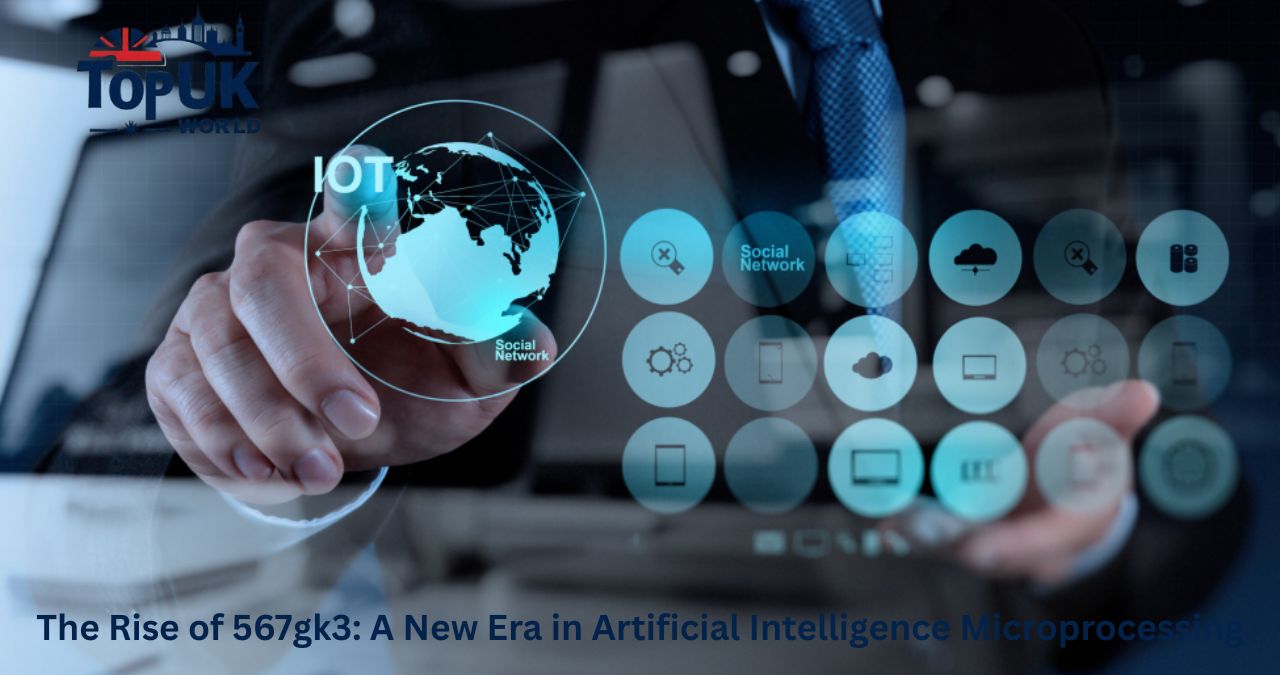In the ever-evolving world of artificial intelligence (AI) and microprocessor technology, one name has rapidly gained attention—567gk3. While at first glance the name may appear to be just a random alphanumeric code, it represents a groundbreaking microchip that has revolutionized how machines process information. Engineered for speed, efficiency, and cognitive capability, 567gk3 is not just a chip—it’s a symbol of the next-generation AI power core.
What Is 567gk3?
The 567gk3 microchip is a neural-architecture-inspired AI chip developed by an international consortium of tech researchers and engineers. It is designed to handle advanced AI computations, neural net training, and real-time decision-making processes at unprecedented speeds while using minimal power.
Unlike traditional processors that use serial computation models, 567gk3 is built on a quantum-inspired parallel computing grid that mimics the human brain’s structure. This makes it ideal for use in industries like:
- Autonomous driving
- Military surveillance drones
- Robotics in surgery and manufacturing
- Smart cities infrastructure
- AI assistants with real-time learning capabilities
Unique Features of the 567gk3 Chip
1. Neural Parallelism
The chip contains 512 synthetic neurons capable of running operations simultaneously, which allows it to process complex machine learning algorithms 50x faster than conventional chips like the NVIDIA A100.
2. Thermo-Adaptive Layering
It’s equipped with self-cooling graphene layers that prevent overheating, especially during high-load operations like live facial recognition or autonomous navigation.
3. Quantum Simulation Module
Though not a quantum computer, the chip can simulate quantum environments, helping researchers train AI models under multivariate uncertainties—like climate modeling or drug discovery.
4. Eco-Friendly Fabrication
The chip is made using biodegradable polymers and recycled rare earth metals, aligning with global sustainability goals in tech production.
Real-World Applications of 567gk3
Healthcare
567gk3 is already making waves in telemedicine and robot-assisted surgeries. For example, AI bots powered by the chip have shown a 91% accuracy rate in early cancer detection through imaging datasets.
Finance
High-frequency trading systems using 567gk3 have reported latency improvements by over 300%, giving financial firms an edge in microsecond-based decisions and risk analysis.
Space Exploration
NASA is testing the chip for deep-space communication where traditional chips fail due to low signal strength and high radiation. The chip’s error-correction abilities and autonomy make it ideal for interstellar missions.
Gaming and AR/VR
In the world of gaming, the chip powers hyper-realistic simulations. Games built on the 567gk3 platform render human emotions, reactions, and real-time decision trees like never before.
How It Compares With Previous AI Chips
| Feature | 567gk3 | NVIDIA A100 | Apple Neural Engine |
| Processing Speed | 18 PetaFLOPS | 5 PetaFLOPS | 1.5 PetaFLOPS |
| Power Usage | 35% lower | Standard | 15% lower |
| Cooling System | Self-adaptive | Fan-based | Passive |
| Architecture | Quantum-inspired | GPU-based | Neural-core |
Challenges Faced During Development
As revolutionary as 567gk3 is, it wasn’t easy to develop. The team faced numerous hurdles:
- Thermal breakdowns during early testing phases
- Supply chain issues post-COVID-19 due to rare earth material shortages
- Initial failures in integrating the chip with legacy systems
- Ethical concerns over the chip’s use in autonomous weaponry
To tackle these issues, the development team collaborated with ethical boards, redesigned the architecture for better backward compatibility, and focused on renewable sourcing.
Security Implications of 567gk3
Given its capacity, there is potential misuse of the chip in mass surveillance or AI manipulation. The developers embedded hardware-based firewall layers and self-locking protocols that activate when unauthorized use is detected. But cyber-activists remain concerned about how governments and corporations might exploit its power.
The Future of AI With 567gk3
The 567gk3 isn’t just a chip—it’s a doorway into a new era of intelligent computing. AI models will no longer need cloud access for processing; they can function independently on local hardware. This decentralization will:
- Reduce privacy concerns
- Boost offline AI capabilities
- Increase global access to intelligent systems, especially in remote areas
In fact, researchers are already calling this the “567gk3 Epoch” in AI history—one that may eventually lead to Artificial General Intelligence (AGI).
Conclusion
In a tech landscape driven by innovation, the 567gk3 AI microchip stands as a shining example of what humanity can achieve when science, ethics, and ambition align. It has already redefined the boundaries of speed, intelligence, and sustainability in microprocessor design. As industries worldwide begin to adopt it, we are on the brink of an AI revolution that may blur the lines between human and machine thinking.
Whether this will lead to utopia or dystopia depends on how wisely we use the power 567gk3 brings to our fingertips.




